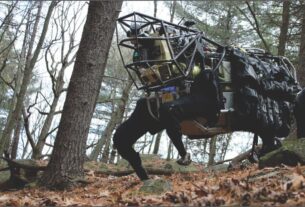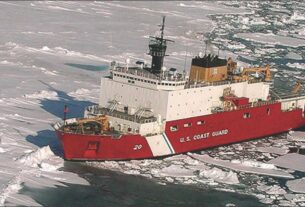|
In a striking technological achievement, Indian Space Research Organisation (ISRO), which has achieved the distinction of pulling off of a successful Indian space story on a shoe string budget, has developed a high end multi object tracking radar(MOTR) that can track space debris, which, in recent years, has become a major threat to orbiting satellites and space missions. For the space faring nations including India the biggest concern is how to ensure the safety of their satellite missions from the threat of rapidly mounting volume of space debris. Not surprisingly then ISRO on its part is regularly monitoring the space debris environment with a view to ensure the safety of the Indian satellite missions.
Against this backdrop, MOTR would help ISRO track certain types of space debris with a high degree of precision. As envisaged now, this radar is planned to be qualified in the upcoming orbital mission of the four stage, reliable Indian space workhorse PSLV (Polar Satellite Launch Vehicle) slated for the second quarters of this year. According to sources in the Indian space agency, this advanced radar system can view objects as small as half a square metre in size from a distance of upto 1,000-km. As it is, only a handful of companies of global standing are known to be possession of technology to build a radar of this class. The 35-tonne MOTR, which is a stationary device, features around 4,000 individual radiating elements capable of emitting radio frequency waves that combine to fuse into a single beam. It can track ten objects simultaneously. MOTR can also be deployed to track a launch vehicle during all the stages of its flight. Indigenous efforts According to MYS Prasad, Director of the Satish Dhawan Space Centre (SDSC), the Indian space port on the Sriharikota island on India’s eastern coast, “The MOTR designed and developed by SDSC is expected to be fully commissioned in three months down the line.” He also revealed that Rs 2450-million MOTR stands out as a shining symbol of the Make in India initiative of the Indian Prime Minister Narendra Modi. As pointed out by Prasad, Raytheon, Northrop Grumman, Lockheed Martin, Thales, Elta and NEC have the capability to make such a sophisticated radar. In particular, this radar would come in handy for India’s proposed manned space flight programme which is yet to receive the green signal of the ruling dispensation in New Delhi. In particular, this radar will be useful for the tracking of the crew module while re-entering the atmosphere. Incidentally, this is very critical for the successful accomplishment of the manned mission. This radar is also crucial for the successful qualification of the Reusable Launch Vehicle (RLV) being developed by ISRO. The first technology demonstrator flight of Indian RLV is planned to take place sometime in September this year. Interestingly, this home grown MOTR can track as many as ten objects simultaneously. More than 20 Indian companies contributed to the development of MOTR. Except for the dome, the entire radar was designed, developed and built in India. Variants of this radar can be used in airports, for wind profiling and also for military purposes. Incidentally, Israel exports similar type of radar for military applications. Currently, ISRO is using data from National Aeronautics and Space Administration (NASA) of USA for monitoring and tracking space debris that could threaten country’s multimillion dollar satellite missions. With an MOTR in place India will be in a position to routinely monitor space debris threatening its satellite missions, planetary probes and manned flights. The looming threat of rapidly piling up space debris continues to pose a serious challenge to the front ranking space faring nations of the world. India, which is fast emerging as a leading space power is also concerned over the looming threat of space debris. Of course, on its part, ISRO is continuously monitoring the space debris movement to ward off the possible threat of the growing volume of space junk in the near earth orbit colliding with its space missions. ISRO is actively associated with the Inter Agency Space Debris Co-ordination Committee (IADC) which is the focal point of global efforts to counteract the threat of space debris to space missions. Since the dawn of the space age heralded by the launch of Soviet Sputnik way back in October 1957, the space debris problem began assuming with the increasing frequency of satellite launches in the backdrop of more and more countries joining the space exploration race. And today, the vast, endless and star spangled expanse of the final frontiers is no more a tranquil and pollution free part of the universe. For man not content with turning the spaceship earth into an “overcrowded and overheated planet” has helped plague the final frontiers with the problem of pollution. Indeed, space debris stands out as a grim tribute to man’s unqualified success in giving a cosmic dimension to the purely terrestrial problem of pollution. Incidentally, space scientists have found that the concentration of space debris is the highest in the low earth orbit and geostationary orbit also referred to as the “real estate” of the outer space where most of the communication satellites are located. What is more, while a satellite in the low earth orbit normally gets easily disintegrated during its re-entry through the dense, hot atmosphere, satellites in GSO-36,000-kms above the equator where a satellite appears stationary in relation to earth-manages to stay back for thousands of years. With the fast growing volume of space trash, outer space seems to be getting messier and chaotic. National Aeronautics and Space Administration (NASA) of USA routinely tracks more than 21,000 man made objects in orbit that are larger than 10 cms. According to a NASA scientist, “A ten centimetre sphere of aluminium would be like a 7kg of TNT. It would blow everything to smithereens”. Not surprisingly then satellites in various orbital slots are required to have their orbits readjusted to help them move out of the threat posed by the free floating space debris. Not long back, International Space Station (ISS) had to be manoeuvred via Europe’s Automated Transfer Vehicle(ATV) to avoid being hit by a hand size piece of Russia’s Cosmos-2251 satellite that broken up after colliding with another satellite. Space junk For many years now, space scientists have been worried and puzzled over issue of developing the techniques and methods to be adopted for cleaning up the space trash. Against this backdrop, Astrosat, a Singapore based enterprise, has said that it is planning to send up into space a specially developed glue capable of cleaning up space junk. The proposal of the company is to send the fixative up into space on-board a two part satellite. Significantly, the first confirmed collision between two catalogued objects in outer space took place in July 1996 when the gravity gradient attitude control boom of the French defence satellite, Cerise, was damaged by a fragment from the Ariane launch vehicle of the European space transportation company Arianespace. However, the first ever incident of “smash up” in outer space occurred in 2009 when a fully operational American communications satellite belonging to the private enterprise Iridium was destroyed following its collision with a defunct Russian satellite Cosmos-2251. This space mishap which took place some 789-km over Siberia generated thousands of pieces of space debris. Incidentally, the early 2007 anti satellite test carried out by China in which an ageing weather watch satellite was destroyed by a modified version of a ground based missile had generated a huge volume of space debris. By all means, the rapidly expanding belt of space debris around the near earth orbit is the outcome of the booming space activities in the wake of an increasing number of countries joining the race to own spacecraft systems for a variety of end uses. With most of the satellites having been disintegrated on the completion of their mission life, there are now only 1,000 active satellites left in the orbit. This implies that many of the satellites which are dead did contribute to the space debris belt around the near earth orbit. In the fast piling up junkyard in near earth orbit, there are fragments of satellites and launch vehicles, nuts, bolts, electronic systems as well as cameras, screw drivers, food cans and empty oxygen cans left behind by the astronauts. There is no denying the point that the rapidly accumulating belt of space debris could render outer space unnavigable and unusable in the years ahead in case of the failure of space faring nations to come out with effective mitigation measures to contain the threat of space debris. With most of the space debris moving at speeds of upto 17,500 kmph, which is considered rapid enough for a relatively small piece of space junk to impair a fully functioning satellite, the space debris threat to satellite missions has assumed serious proportions. However small sized debris are difficult to detect and track. Many pieces of disintegrated satellites and launch vehicles continue to stay in orbit indefinitely if they attain what is called the first cosmic speed. Only objects that slip below an altitude 120-150 km re-enter the dense atmosphere of the earth to blaze down as unidentified pieces on earth. Clearly and apparently, the collision hazard posed by the space debris is mainly due to high energy impact caused by the rapid acceleration. Of course, vigorous global efforts are on to ensure the safety of space missions from the menacing threat of freely roaming space debris. Endeavours are also on to reduce the space debris growth rate through the prevention of in orbit explosions which account for a large volume of space debris. According to European Space Agency(ESA) the- only effective long term means of stabilizing the space debris environment at a safe level is through the removal of mass of debris from regions of high densities. As part of the space debris mitigation plan, there is a suggestion to launch a robotic mission directed at realizing a controlled re-entry of individual pieces of debris including dead satellites. Similarly, there are suggestions for deploying a kind of large cosmic net to collect debris or tying harpoons into defunct and dead satellites to drag them back to earth. All said and done, the long term solution for the problem of space debris lies in developing systems and techniques focussed on not only cleaning the outer space of the space garbage but also ensuring that in future the generation of space debris is kept at the minimum through various innovative measures. As it is, the most recent research studies on the impact of space debris on space missions comes to the conclusion that without an effective debris mitigation measure in place, “the debris environment cannot sustain the long term operations of large constellations but could sustain the long term operations of medium sized constellation of upto 100 satellites deployed in orbits associated with the highest collision risks”. |
|
Tuesday, April 30, 2024




